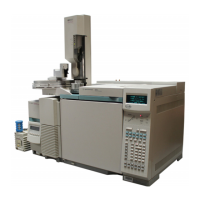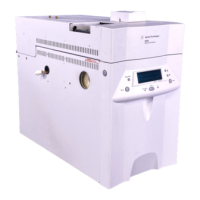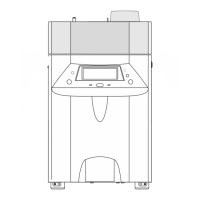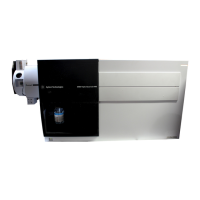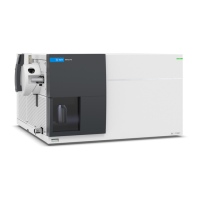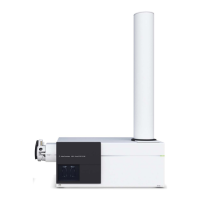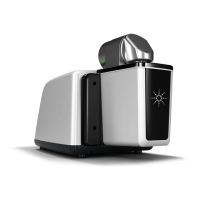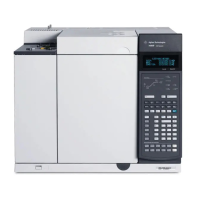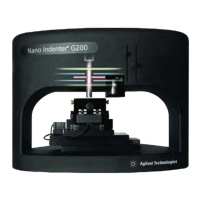159
Signal Handling
Digital data handling
ChemStation
The GC can process data at 11 different data rates, each corresponding to a
minimum peak width. The table shows the effect of data rate selection.
Table 21 ChemStation Signal Processing
You cannot change the data rate during a run.
You will see higher relative noise at the faster sampling rates. Doubling the data
rate can double peak height while the relative noise increases by 40%. Although
noise increases, the signal-to-noise ratio is better at the faster rates.
This benefit only occurs if the original rate was too low, leading to peak
broadening and reduced resolution. We suggest that rates be chosen so that the
product of data rate and peak width in seconds is about 10 to 20.
Figure 25 shows the relationship between relative noise and data rates. Noise
decreases as the data rate decreases until you get to data rates of around 5 Hz.
Data
rate
Minimum peak width
(Hz) (minutes) Relative noise Detector Column type
200 0.001 3.1 Narrow-bore (50 µm)
10 0 0.002 2.2 FID/FPD/NPD
only
capillary
50 0.004 1.6
20 0.01 1
10 0.02 0.7
5 0.04 0.5 to
2 0.1 0.3 All types
1 0.2 0.22
0.5 0.4 0.16
0.2 1.0 0.10
0.1 2.0 0.07 Slow packed
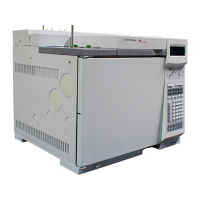
